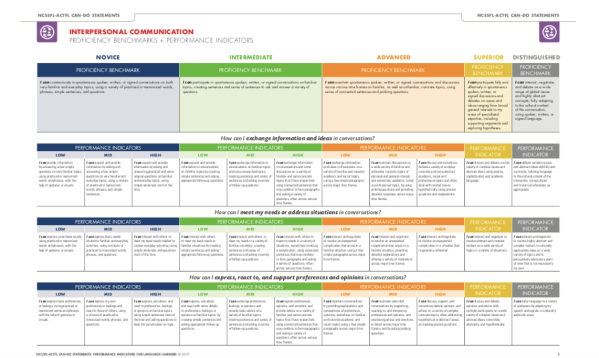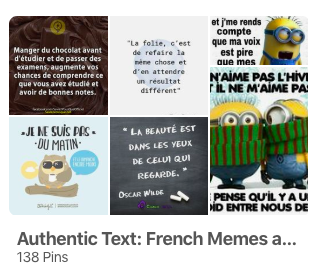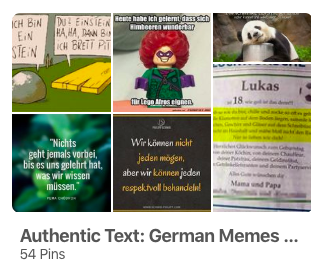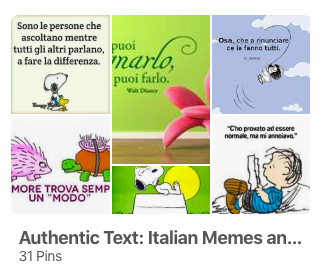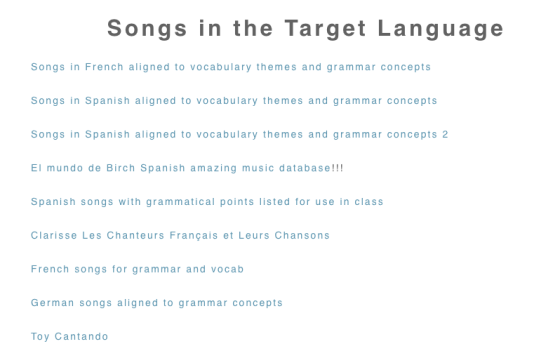
This is a sequel to my first post on “Teaching Grammar in Context Using Authentic Resources” posted on April 13, 2018.
In that post, we explored several of the approaches for teaching grammar in context:
Many of the above mentioned strategies allow students to use an inductive approach to figure out the “why” and “how” of grammar in context. Some have more structured protocols than others. Which one you choose depends on your students, the particular grammar point you want to highlight, and what works best for your teaching.
As we know, ACTFL’s Core Practices for World Language Learning include “guide learners through interpreting authentic resources” and “teach grammar as a concept and use in context.”

For this post, let’s turn our attention to examples of how authentic resources that might be used to teach grammar in context, thus combining two of the core practices.
The most natural way for students to gain an understanding of grammar in the target language is for them to see it being used in context. Context carries meaning for students in lieu of learning “about” grammar in isolation, often in English.
In no way do the Core Practices imply that grammar or structure are no longer important to language learning. Looking closely at the NCSSFL-ACTFL Can-Do Statements, beginning at the Intermediate High proficiency level (in the case below for interpersonal communication), students must be able to exchange information and interact across various time frames. At those levels, language learners must have structural understanding to be able to communicate in a variety of tenses.
Memes and quotes
A great place to start with teaching grammar as a concept and using it in context through authentic resources is to use memes and quotes.
Memes (although they cannot always be verified as authentic) are examples of grammar in context mixed with humor. Many of them involve cats, dogs, and characters from television and movies.
A series of memes that are examples of a particular grammar point can be shown to language learners to have them draw conclusions about how that particular structure works.
Here are some examples below for adjectives in French:

One way to approach this task is to give small groups of students one meme. Students analyze the meme first for meaning. What is the meme trying to say? Students use the visuals, cognates, words they already know, and words that may be related to ones they know to help them unlock the meaning. The teacher circulates in the classroom and assists students with guessing the meaning of words with which they are unfamiliar using target language examples, circumlocution, and visuals, etc. to reinforce their meaning.
Then, students’ attention is directed to the adjectives in each quote/saying and the students draw conclusions about:
- the gender of the nouns being described
- the position of the adjectives (before or after the noun)
- the endings on the adjectives and what they say about the nouns they are describing.
The teacher might follow up with asking students to change the nouns in the memes. For example, in the meme with the giraffe, students can rework the quote to include a noun that is feminine, plural, etc.
The small groups of students may then be asked to create a meme of their own using ideas from the examples.
Visit my Pinterest page to see collections of memes and quotes for multiple languages or click on the images below for particular languages (French, German, Italian, and Spanish):
Tweets and other social media posts
The tweets below are authentic social media posts that all demonstrate the comparative in Spanish. The teacher searched for them in Twitter by inputting phrases like “más que” and “menos que.” Consider how a teacher might initially have students interact with the tweets as an interpretive task (deriving meaning from them) and then use the same tweets to examine how the comparative works in Spanish. Students may be asked to highlight or circle the items/ideas being compared in each sentence and draw conclusions about what determined the ending of each adjective.
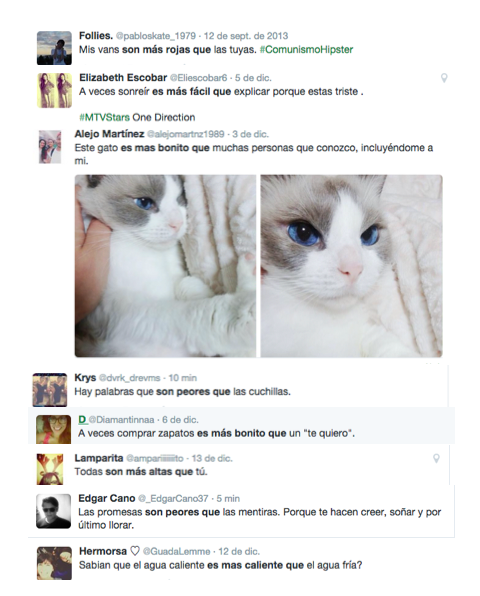
Poems and song lyrics
Poems and song lyrics are types of authentic text that are very friendly to teaching grammar as a concept in context. Many of our language colleagues have aligned popular songs and famous poems in the target language to grammatical structures that they demonstrate in context and have generously shared those lists/databases with the rest of us.
French:
Clarisse Les chanteurs français et leurs chansons (crowd-sourced database)
German:
Ten Songs with Hidden German Grammar Lessons
Spanish:
El mundo de Birch Spanish amazing music database!!!
For more links for target language music aligned to grammar points, go to:
An example of a poem that French teachers often use as a great example of grammar in context, is “Déjeuner du Matin” by Jacques Prévert
The entire poem is embedded with examples of the passé composé in context:
Example in practice:
In an intermediate German class, the teacher shows a meme “It’s enough for me that I know that I could if I wanted to” to gain students’ attention and to spark a review of the use of the subjunctive in German. Students are asked to brainstorm descriptors of the frog (confident, lazy, smart, etc.). The teacher asks the students to tell why they chose the various descriptors. If necessary, the teacher models an example (I think he is _____ because _____.)

The teacher draws the students’ attention to the verbs in the meme and their tenses. She tells them that they will be listening to a song with a similar title and theme, “Wenn ich könnte wie ich wollte,” by Howard Carpendale.
The students are given a cloze activity with the lyrics to the song where all of the subjunctive forms (and other phrases) are removed and the students fill in the verb forms. As they listen to the song, they check their answers and fill in other missing phrases. The students share their answers in small groups and then listen a final time with all lyrics complete.
The teacher then provides a chart where the students fill in the present tense, imperfect tense, and the subjunctive verb forms (the verbs in bold all appear in the song):

As an extension activity, students are led through a guided writing task where they plan, peer edit, and write the final draft of a journal entry entitled “If I could, I would…”

